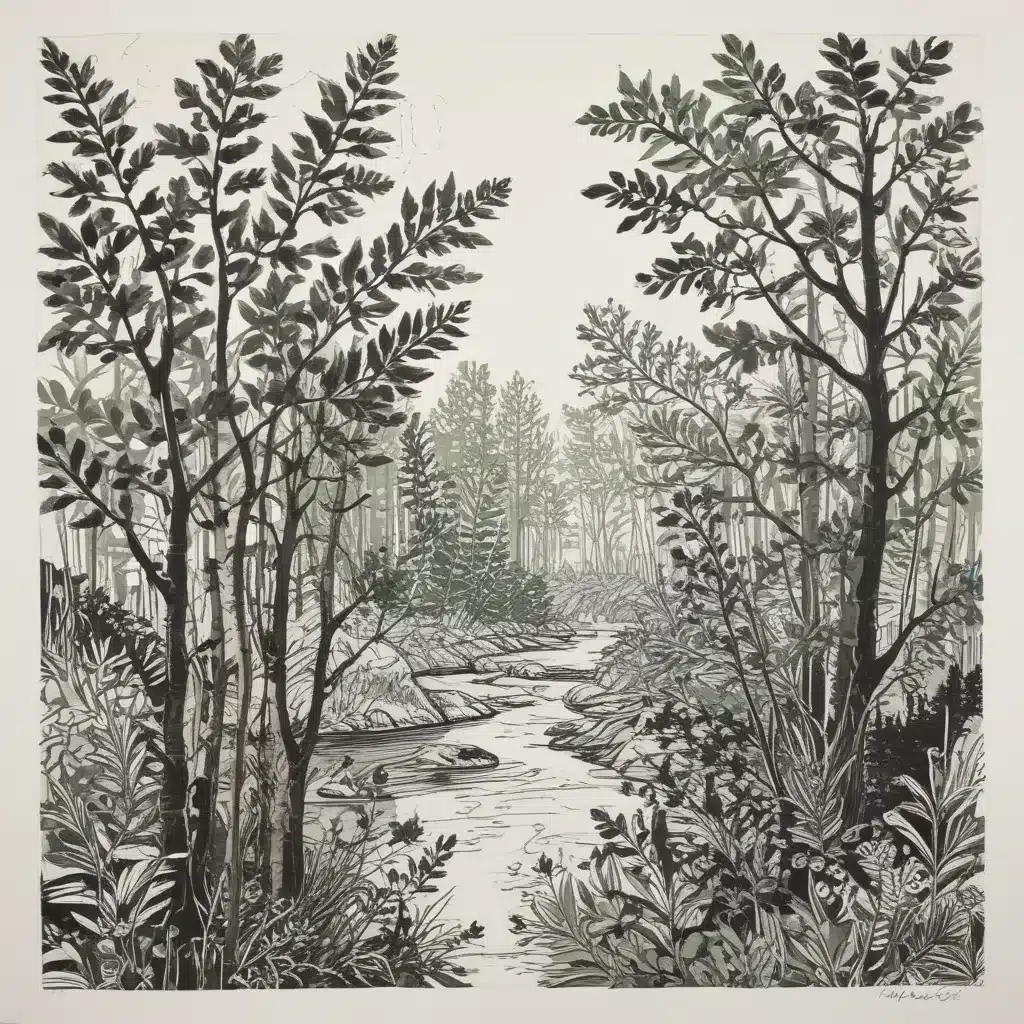
In today’s climate-conscious world, the art community is increasingly seeking out ways to reduce its environmental impact. As an experienced art writer and creative consultant, I’m excited to share some insights on eco-friendly printmaking – a growing field that allows socially aware artists to explore diverse creative expression while prioritizing sustainability.
Now, this might seem counterintuitive…
Sustainable Printmaking Methods
Printmaking has long been a popular medium for artists, offering a range of techniques to create unique, multidimensional works. However, traditional printmaking processes often relied on harsh chemicals, toxic inks, and energy-intensive equipment – all of which can have a significant environmental toll. Fortunately, there are now many eco-friendly printmaking alternatives that allow artists to minimize their carbon footprint without sacrificing artistic quality or creative freedom.
One such method is soy-based relief printing, which uses non-toxic, plant-derived inks in place of oil-based varieties. These inks are not only better for the environment, but also offer a vibrant, high-quality print. Artists can carve their designs into linoleum or wood blocks, then apply the soy-based ink and transfer the image onto paper or fabric. The process is relatively simple, making it an accessible entry point for emerging printmakers.
Another sustainable option is solar plate etching, which utilizes photosensitive plates exposed to sunlight rather than harsh acid baths. This method significantly reduces the use of harmful chemicals while still allowing for intricate, detailed prints. The solar plates can be reused multiple times, further minimizing waste. For artists interested in exploring this technique, there are many tutorials and workshops available to guide them through the process.
Environmentally Conscious Inks and Materials
Beyond the printmaking process itself, eco-conscious artists are also exploring sustainable ink and material choices. Traditional oil-based inks contain volatile organic compounds (VOCs) that can be detrimental to both human health and the environment. Water-based and soy-based inks, on the other hand, are biodegradable and emit far fewer harmful emissions.
Similarly, rather than relying on paper sourced from endangered forests, artists are turning to recycled, tree-free, or FSC-certified papers. These alternatives not only reduce deforestation, but also often have a unique, textural quality that can enhance the final printwork. Fabrics like organic cotton and hemp are also becoming popular substrates for eco-friendly printmakers.
Non-Toxic Printmaking Processes
In addition to material selection, socially aware artists are also exploring non-toxic printmaking techniques that minimize the use of harsh chemicals. One example is monotype printing, which involves applying water-soluble paints or inks directly onto a flat surface, then transferring the image onto paper through pressure. This process eliminates the need for acid baths, solvents, or other potentially hazardous materials.
Another sustainable option is collagraph printing, where artists create plate surfaces by gluing textural materials like cardboard, fabric, or found objects onto a substrate. These plates can then be inked and printed, allowing for unique, layered compositions without the use of toxic chemicals.
For artists interested in exploring eco-friendly etching, solar plate etching is a great alternative to traditional acid-based methods. By using photosensitive plates exposed to sunlight, this technique avoids the need for harsh acids or solvents, making it a more sustainable and safer option.
Eco-Friendly Art Education and Outreach
As the demand for sustainable art practices continues to grow, there is also an increasing focus on eco-friendly art education and outreach. Many art schools and community workshops now offer classes in eco-printmaking, sustainable material use, and environmentally conscious creative processes. These programs not only teach valuable technical skills, but also encourage participants to consider the environmental impact of their artistic choices.
Beyond formal education, some artists and collectives are organizing community-engaged art projects that bring awareness to environmental issues. These initiatives might involve public printmaking demonstrations using sustainable methods, collaborative eco-themed murals, or workshops that upcycle discarded materials into unique artworks. By actively engaging the public, these efforts help to foster a greater appreciation for the intersection of art and environmental stewardship.
Socially Aware Art Production
In addition to minimizing their environmental impact, socially conscious artists are also exploring ways to double-check that their creative practices align with broader principles of social responsibility and equity. This includes prioritizing fair trade supply chains, supporting ethical manufacturers, and advocating for the rights of marginalized communities within the art world.
One example of this is the growing trend of OEKO-TEX® MADE IN GREEN certification, which provides transparency around the production of textile-based artworks. This label ensures that the materials and processes used meet stringent environmental and social criteria, including the absence of harmful substances, respect for worker rights, and environmentally sound manufacturing.
By aligning their art production with these socially aware principles, artists can not only reduce their environmental footprint, but also contribute to more equitable and sustainable creative ecosystems. It’s a holistic approach that considers the far-reaching impacts of artistic practice, from material sourcing to finished product.
Conclusion
As the world faces the urgent challenges of climate change and social inequity, the art community has a unique opportunity to lead by example. By embracing eco-friendly printmaking techniques, sustainable material choices, and socially conscious production methods, artists can create beautiful, impactful work while minimizing their environmental impact and promoting positive change.
Through educational initiatives, community-engaged projects, and a commitment to ethical practices, socially aware artists can inspire others to rethink the way they approach their creative pursuits. The journey towards more sustainable and equitable art production is an ongoing one, but the rewards – for both the planet and the creative community – are immeasurable.
So, whether you’re a seasoned printmaker or an emerging artist exploring new mediums, I encourage you to dive into the world of eco-friendly printmaking. Experiment with soy-based inks, solar plate etching, and other sustainable techniques. Seek out educational resources and collaborative opportunities that align with your values. And above all, let your art be a catalyst for positive transformation – for the environment, for your community, and for the world at large.
Example: Pencil Portrait Challenge 2024